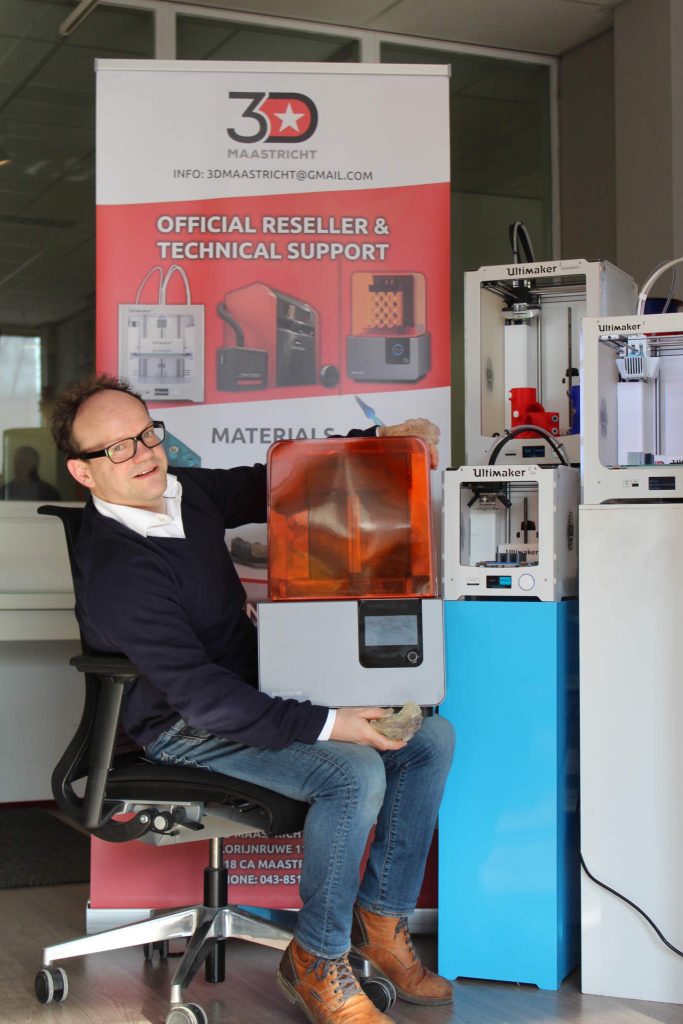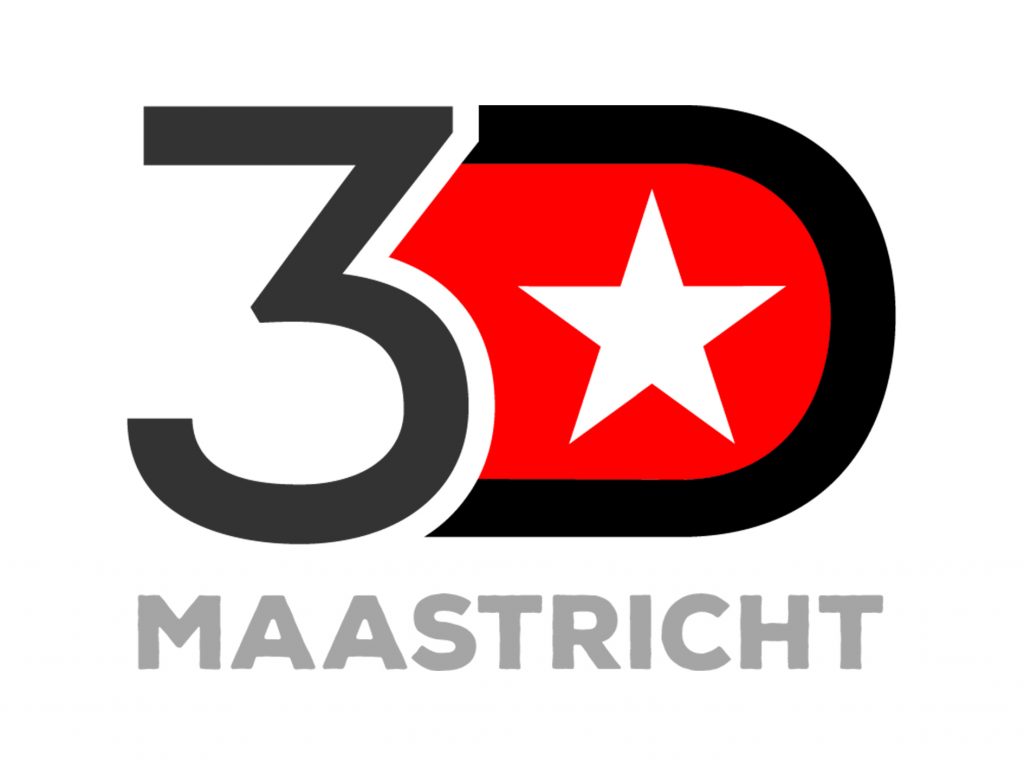This is a guest post in our series looking at the future of 3D Printing. To celebrate 5 years of reporting on the 3D printing industry, we’ve invited industry leaders and 3D printing experts to give us their perspective and predictions for the next 5 years and insight into trends in additive manufacturing.
Noël Daemen is an Economist and Master of Law, he studied at the Maastricht University. After 20 years of consultancy at engineering companies, in 2014 he became an entrepreneur with the focus on applications of 3D technology.
Noël Daemen is the owner and managing director of 3D Maastricht, a 3D printing service provider for business and education. The company provides professional solutions to implement 3D technology. Noël Daemen also takes a keen interest in digitalisation, smart factories, big data, the Internet of Things and co-creation.
3D Printing the next 5 years by Noël Daemen
An interesting perspective on where the 3D Printing Industry is heading can be gained by looking at the Mobile Telecom Industry. We have to go back to the nineties. Mobile Telecom was a very promising industry. Although the first devices were big, heavy and expensive. It’s prime functionality was communication. Besides the advantages there was resistance. Restaurants installed jammers to block mobile calls. Providers now offer services like voice, data and content. Across mobile and fixed networks. But mobile network operators in Europe today bolster revenues and face downward price pressures. Companies merge to be able to integrally provide communication and entertainment services.
To what extent this example can be predictive for the evolution of the 3D Printing Industry?
In my vision the use of 3D technology will become exponential as soon as demand and several human aspects take the lead. For several reasons it will work fast this time.
Demand pull shift
Markets for 3D printing move from technology push to demand pull. For more than a year industry leaders found out that demand is a condition in order for 3D technology and services to be used. To meet this condition we saw more transparency and dissemination of knowledge, plug & play technology, joint initiatives, takeovers, less hype, shake-out of over promising suppliers and more attention for education.
Still many entrepreneurs are unaware or don’t adopt applications of 3D printing. And if they do, they tend to weigh disadvantages multiple times more than benefits. Besides that they have become immune for marketeers who overestimate the benefits of their new product or service.
The complexity of 3D printing arouses much interest at first. At the same time this might also be the reason why they do not use it themselves.
Uptake in the market can be powered by close cooperation between marketeers, designers, hardware & software providers and material specialists. They can assist interested customers in identifying the technical and commercial opportunities. This can happen at suppliers or in locally situated experience centers and smart factories. For the infant phase supported by governments who -already- believe in the 4th industrial revolution are making preparations.
Things can go fast because there is momentum. Focus shifts to market pull and customer centric values. After surviving the crisis, getting revenues to normal again, more and more SMEs have time and money to invest in innovation. As an industry we need to understand the customer to see and discover relevant opportunities. Give him the ability to decide on using tools, services and competences.
We as an industry are equipped to show what’s possible. For the risk averse entrepreneurs we just 3D print examples. So they can decide on the benefits and see if it makes sense.
Experience centers and smart factories can be of assistance at this stage. These should be located close to customers. In many industries apart from price setting, service, quality, custom run printing, short run printing and quick digital manufacturing becomes important. Insourcing, reshoring and onshoring are rapidly gathering momentum. These are trends that will be essential to take 3D fabrication to the next level.

Cooperation in the value chain
Change will need to come from people who strategically want to innovate. Later on it will come from those who will be forced to change due to competition. In new markets the advantage for first movers is the lack of competition. But due to digitalisation, internet and transparency, knowledge is easily available for everybody. So competition can develop fast. Leading to lower prices, many suppliers and pressure on quality.
Smart, ambitious and like minded people can work effectively together online. As a matter of fact the whole process until 3D printing and post processing, can be done digitally together. Making a close interdisciplinary cooperation between participants in the value chain possible.
Not hampered by resources and many suppliers available, fast second movers or fast followers might be in advantage to go fast. Because they can learn from experiences and experiments of the first mover companies, use the latest technology and face lower R&D costs. They can focus and invest more money in marketing and sales to create new markets.
More talent and less ego
Although technologies seem ready it still can take a while before the market for its applications are commercially attractive.
3D printing is disruptive for how products and services are developed, manufactured and delivered, it comprehensively affects the way companies work. It has implications for the whole value and supply chain. Besides the disruptive character of the technology, yet another factor commercially is of greater importance.
The strategic agility and the capacity to change an organization. The strategy of a company and consequently decisions on relevant investments are decided on by management or at board level. The choice to invest in innovation and to experiment is a decision they make.
In that decision lies a trade off between the will and power to innovate and the choice to continue selling products and services based on existing resources, competences and expertise. A choice between vision and leadership or staying on the safe side.
Innovative human behaviour can help faster uptake in the market. Many entrepreneurs -young and old- have in common they are prepared to collaborate, invest, learn, they have a flexible approach and like to experiment and learn from mistakes. Without any guarantee of success.
Younger generations have -in general- more digital talent and are less hindered by their ego. The definition of success differs between generations, at least that is what I observe sometimes.
Conclusion – a need for collaboration and innovation
My conclusion is that human factors are important in accelerating the market uptake of applications of 3D printing. For decisions on cooperation and investments we need innovative human behaviour.
Collaborative demonstration projects on applications can be of help. Not only to show the innovation economics of 3D printing and have business cases available. But also to learn from innovation in human behaviour.
3D printing will become mainstream for many industries. The potential advantages are serious. In terms of business, jobs, wellbeing and a more sustainable world. If more Joseph’s and James’s of this time team up effectively, a very bright future for the 3D Printing Industry lies ahead of us.
More information about 3D Maastricht is available here.
This is a guest post in our series looking at the future of 3D Printing, if you’d like to participate in this series then contact us for more information.
For more insights into the future of the 3D printing industry, sign up to our newsletter and follow our active social media channels. Let us know your thoughts about this perspective on the future of 3D printing in the comments below.




